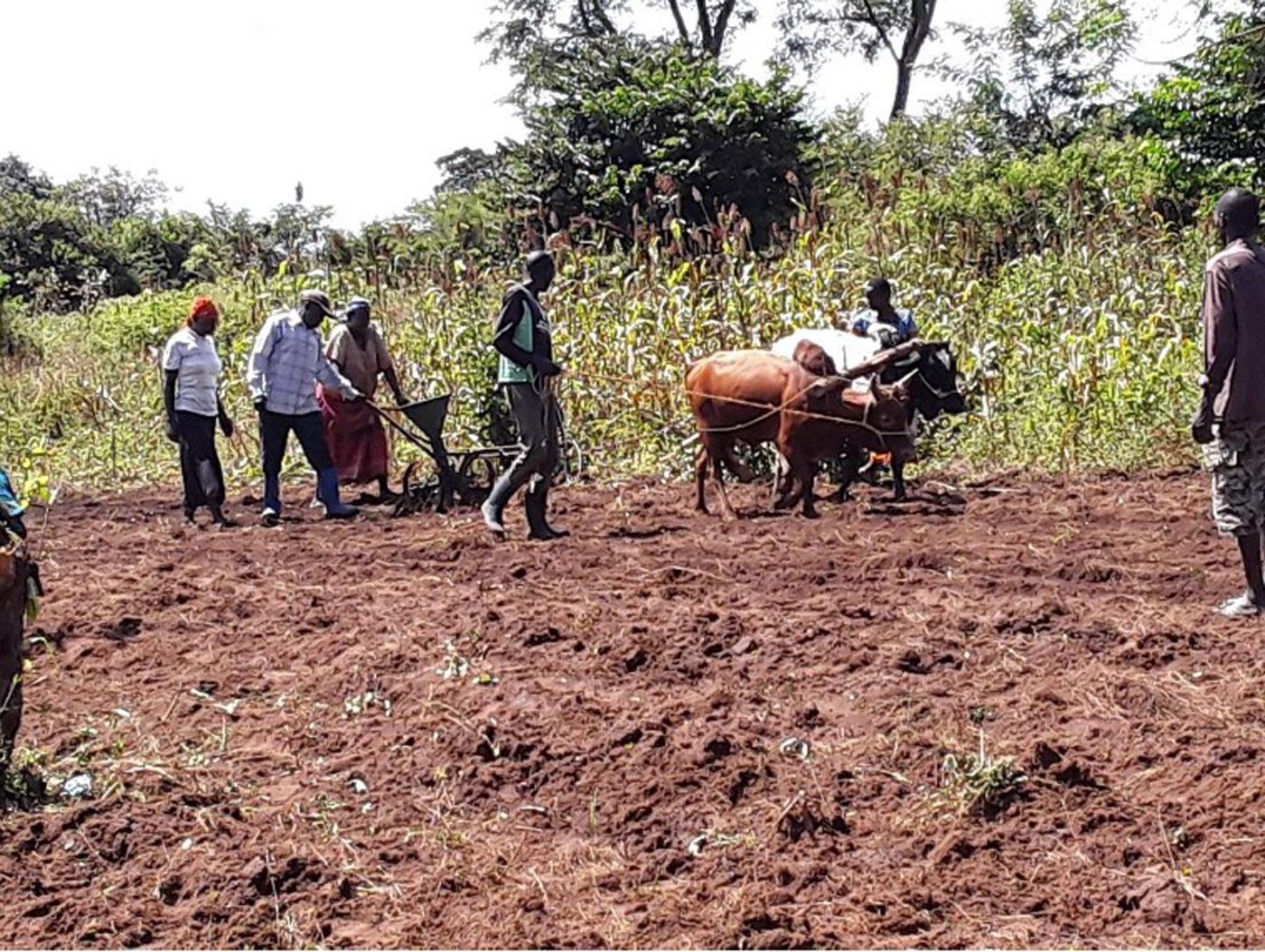John Obuo has grand–but simple and relevant–plans to improve the lives of smallholder farmers in his native Uganda.
A graduate of Makerere University in Kampala, Obuo is a researcher with Uganda’s National Semi-Arid Resources Research Institute (NaSARRI). He came to our attention after he and his colleagues applied for a Grow Further grant to support their research into smallholder agriculture innovation. Their proposed project is so compelling that we had to reach out to learn more.
Obuo and his colleagues have a big vision. Most researchers who applied for Grow Further grants are focused on one particularly promising innovative crop variety or agricultural technology. Obuo and colleagues say they want to investigate ways to boost dryland agriculture in Uganda through two promising crops. But that’s not all. They also want to train farmers on a simple but effective technology to sow, grow, and harvest these foods, and at higher yields.
Green gram for green thumbs
“Green gram and cowpea crops have the potential to make a significant contribution to global food and nutritional security,” Obuo told Grow Further in an interview.
Green gram is more commonly known as mung bean. Cowpea and green gram varieties currently under cultivation can’t hold up to the expected challenges in the regional climate that are surely coming, Obuo explained. Thus, he plans to improve both of these crops, combining their potential in sort of a dynamic duo for smallholder farm climate adaptation.
“The problems with the varieties that the smallholder farmers are currently growing include low yield potential,” he said. “They are not tolerant to droughts.”
As with other agricultural regions impacted by global warming, Obuo confirmed that droughts are becoming more common in Uganda. Small-scale farmers there have long struggled to feed the nation and their families. Now and through no fault of their own, an increasingly unstable and uncertain climate is making that task all the more difficult. The ultimate solution may be new crop varieties that can handle the heat and drier conditions, Obuo said. “The proposed research is aimed at developing cowpea and green gram varieties that are more drought tolerant, resilient to climate change, and are better suited for semi-arid climates than the current varieties grown by farmers.”
It sounds simple enough, but it isn’t.
The devil in the details
One of the things that made Obuo’s application stand out is the clear pathway to success and plans for broad market dissemination that this NaSARRI research team has laid out so far.
The problems with the varieties that the smallholder farmers are currently growing include low yield potential. They are not tolerant to droughts.
First, they’re planning experiments at their research center to identify lines of mung bean and cowpea that show the most promising drought-resistant characteristics. Once they think they have located the winning varieties, the next step is to test these crops at farmers’ fields.
In the field, they expect the winning seed varieties to multiply and grow. Then it’s back to the lab for some additional testing, to sort out which varieties of this first generation show the greatest resilience to drought stress.
It’s at this stage that Ugandan government authorities get involved, specifically Uganda’s Ministry of Agriculture, Animal Industries and Fisheries, or MAAIF. What comes next? “Release of the approved lines by MAAIF and promoting them in the farming communities,” Obuo explained. From there, stakeholders will proceed toward the “establishment of a simple and easy seed multiplication and delivery system among the smallholder farmers,” he added.
Old-fashioned tech will lend a hand, too
Their project also proposes disseminating new technology to help farmers grow and harvest these new and improved varieties of cowpea and green gram efficiently and effectively. Except the precise technology they’ve identified to achieve this isn’t all that technical—they want to train farmers to cultivate these climate-resilient seeds using ox-drawn farm implements.
We asked Obuo why his team wasn’t considering tractors or other mechanized solutions. He has a ready response—mechanization would simply cost too much, and anyway wouldn’t be appropriate for farmers who manage plots so small that they’ve grown accustomed to doing all of the work by hand.
“A majority of farmers own small acreages ranging from one to three acres, and over 90 percent of them have access to oxen or bulls for land preparation and other farming activities,” he explained. “Therefore, the project targets ox-drawn technologies to improve crop cultivation as opposed to tractors or other machines.” Not only would it be prohibitively expensive to purchase tractors for all the farms they want to incorporate into their project, he added, but the cost of fuel and machine maintenance would only add to farmers’ financial burdens. “Ox-drawn implements and their spare parts can easily be purchased from local markets or made by local artisans,” Obuo explained, “while spares for tractors are not easily accessed in rural areas of Uganda.”
Recruiting allies
Obuo and his partners have an active promotional campaign in mind involving “on-farm demonstrations, field days, training farmers on basic agronomic practices and use of ox-drawn planters and weeders, the establishment of appropriate seed multiplication and delivery system, radio talk shows on local FM radio stations, displays of these varieties during agricultural shows,” and more, he told us. They plan to reach out to nonprofits, the private sector, and governments in a bid to gain allies in their efforts.
Mung bean, cowpea, and ox-driven farming. Is it a winning recipe for better food security and better nutrition? Obuo and his team insist that it will be.
“When these stakeholders work together, it will stimulate and increase adoption of the improved cowpea and green gram varieties and ox-drawn technologies, which will lead to increased crop production,” Obuo said, “thus improving household food, income, and nutrition security.”
— Grow Further
Photo credit: Farmers being trained to use ox-drawn implements to raise mung beans and cowpeas. John Obuo.




